This Is The 2018 Range Rover Velar: It's A Big Deal
This is the 2018 Range Rover Velar, and it's officially A Big Deal for Land Rover – not to mention new territory. The Range Rover Velar doesn't replace an existing model but, instead, slots into the so-called white space between two. So, it's larger than the Evoque, but smaller than the Range Rover Sport, with a 113.15-inch wheelbase.
There's more to it than just size, however. The new mid-sized luxury SUV is the first to be on Range Rover's Lightweight Aluminum Architecture, a fresh platform which will form the basis of the brand's next generation of cars. It also introduces a new design language, paring back extraneous details. It's something we can expect to see on future SUVs as each gets updated in turn.
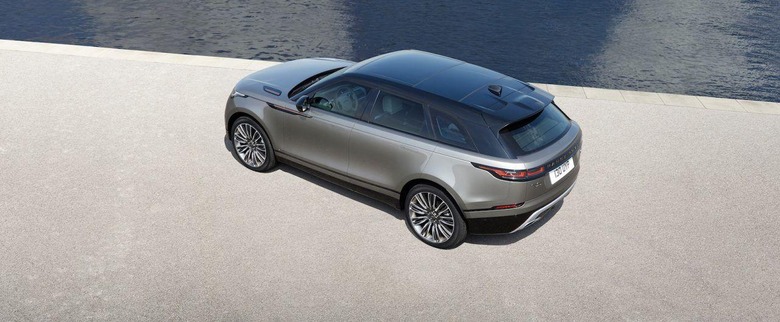
"We call the Velar the avant-garde Range Rover," Gerry McGovern, chief design officer at Land Rover, says of the new SUV. "It brings a new dimension of glamour, modernity and elegance to the brand."
So, there are brand-familiar elements like the floating roof and clamshell hood, together with the rising waistline and tapering side glass. The front overhangs are short – paying dividends in both visual stance and when taking the Velar off-road – while the rear overhangs are larger, contributing to 34.4 cubic feet of trunk space behind the second row. Range Rover's family grille has been finessed, is flanked by super-slim – and standard-fit – LED headlights, and sits atop larger air inlets.
It's the detailing where things get particularly special. The Velar's flush door handles are a first for the brand, emerging from the bodywork when the key fob button or their own inset button is pressed. Slimline fog lamps use LEDs like the headlamps, and are integrated into the lower black feature-line, while the LED taillamp have a 3D appearance and are echoed by a full-width stop lamp that's effectively invisible until you hit the brakes.
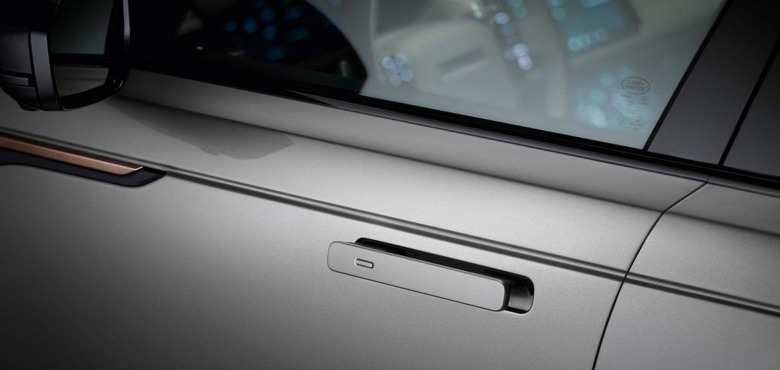
There'll be a number of different exterior packages to choose between. The Velar R-Dynamic gets a deeper front bumper with even larger vents, together with burnished copper detailing on the bumper blades and fender vents. A Black package finishes there grille mesh, hood and tailgate lettering, fender vents, and other parts in black.
As for the Premium Exterior Package, that splashes silver across non-R-Dynamic Velar models. Twelve paint colors will be offered overall, including a new Flux Silver satin finish that'll only be offered on the Velar First Edition, an initial production run of just 500 vehicles for the US. That also gets 22-inch alloy wheels, which are optional on the rest of the range. In total, Range Rover will offer nine wheel designs, ranging from 18- to 22-inches and in four finishes, for the Velar.
For under the hood, there's a choice of three different engines. A 2.0-liter turbocharged 4-cylinder Inegnium diesel will be offered, with 180 horsepower and 317 lb-ft. of torque from 1,750 rpm. It'll do 0-60 mph in 8.4 seconds.
For those who want more horsepower there's its 2.0-liter turbocharged 4-cylinder gas counterpart. That has 247 HP and 269 lb-ft. of torque, the latter arriving from 1,200 rpm. It'll do 0-60 mph in 6.4 seconds.
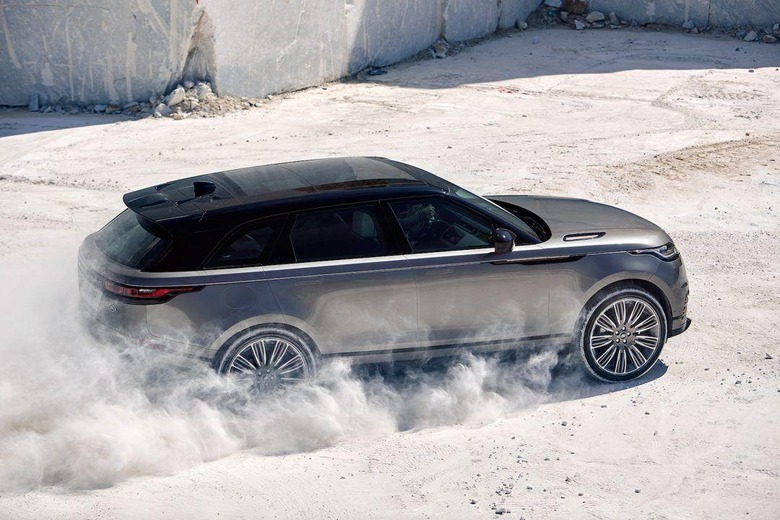
Finally, there's the star of the line-up, a 3.0-liter supercharged V6 gas engine with 380 HP and 332 lb-ft. of torque. It does 0-60 mph in 5.3 seconds and has an electronically-limited top speed of 155 mph. All three engines are paired with a ZF eight-speed automatic transmission, with paddle shifters.
Adaptive Dynamics is standard across the Velar range, adjusting the dampers at all four corners based on real-time wheel and body movement. Optional – though standard on the Velar First Edition – is Configurable Dynamics, which allows the driver to choose between drive modes that adjust throttle response, gear shift timing, suspension stiffness, and power steering weight. Each can be individually customized, too. Finally, there's standard Torque Vectoring by Braking, which can lightly brake the inner wheels on a turn to avoid understeer.
Cameras mounted high up on the windshield are used for autonomous emergency braking as well as lane-departure warnings and lane-keep assistance. Reverse traffic detection uses rear radar sensors to warn of any passing vehicles while you're backing up, and there's traffic sign recognition to spot speed limits and flag those up on the dashboard.
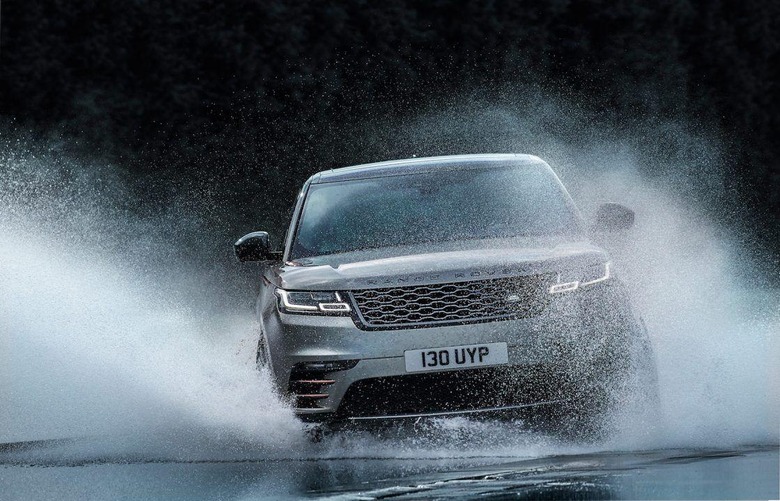
Adaptive cruise control with queue assist can be fitted, with the Velar able to slow completely to a halt and then pick up again. Another option is 360-degree parking assistance, giving a virtual bird's eye view of the car; alternatively, the Velar can optionally navigate itself into a parallel or perpendicular space.
One thing no Range Rover can compromise on is off-road ability. The Velar is, of course, all-wheel drive – a multi-plate wet clutch and chain drive to the front axle shifts power between the front and back in 100ms – and offers optional air suspension, not to mention Terrain Response 2, an Active Rear Locking Differential on V6 models, and All Terrain Progress Control. On the standard coil springs there's 8.4-inches of ground clearance and 23.6-inches of wading depth; tick the air suspension option (or grab a V6 car, on which it's standard-fit) and those numbers increase to 9.9-inches and 25.6-inches, respectively.
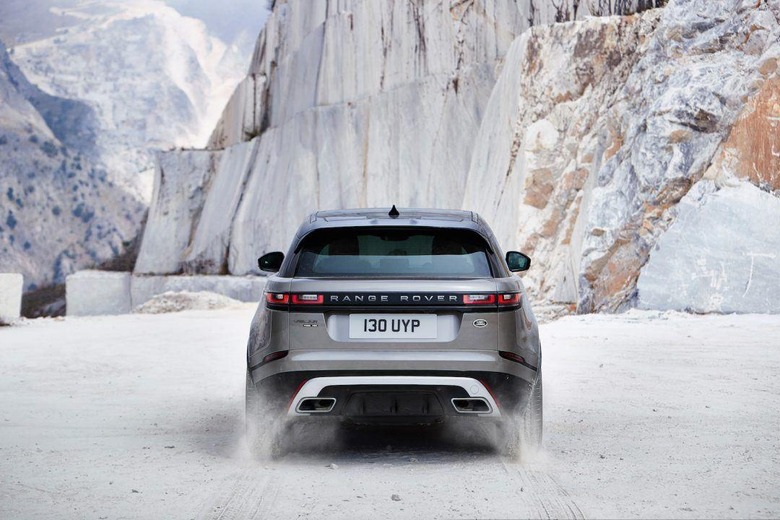
Under the skin there's double-wishbone front suspension, combining more aluminum for weight benefits with steel for the front lower control arms. At the back, integral link rear suspension gets forged aluminum toe links and upper control arms for better lateral stiffness. Approach angles of up to 24.5-degrees are supported, a breakover angle of up to 20.3-degrees, and departure angles of up to 27-degrees.
As for towing, the Velar V6 can manage up to 5,512 pounds. The SUV also gets Advanced Tow Assist as an option, which allows drivers to reverse while a trailer is hitched by turning the rotary controller; the Velar itself handles the actual steering inputs. Hitch Assist, meanwhile, helps guide the SUV back up to mate with the tow hitch.
Still, there's a fair chance this particular luxury SUV will never go near the muddy stuff, and the cabin has plenty of cosseting for city use. As per the exterior, the focus has been cutting back on unnecessary details, leaving Velar's interior looking cleaner and more minimalistic. There's space for five.
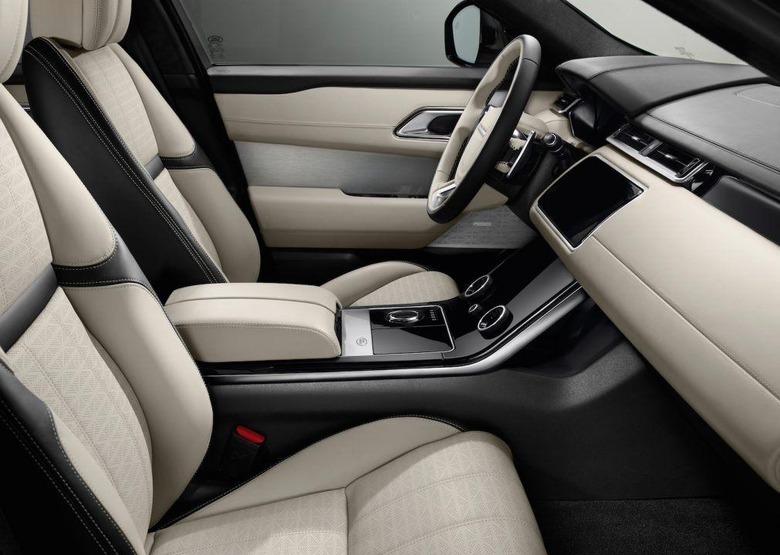
The front seats offer up to 20-way adjustment and can be had with heating, cooling, and massage options. At the back, there's a 40/20/40 split bench, which can also be had with heating and electric recline. Four-zone climate control and cabin air ionization are options; six airbags are standard-fit.
It's the dashboard and infotainment which really set the Velar apart from existing Range Rovers, though. Pride of place is given to two 10-inch touchscreens, part of the new InControl Touch Pro Duo system, and which are completely flush with the center console. Range Rover has done away with separate buttons and knobs for its terrain response systems, replacing them with on-screen controls and two multi-function rotary controllers. A rotary transmission controller rises from the center console when the Velar is started up.
InControl Touch Pro Duo's upper touchscreen is usually split into three panels, for navigation, media, and phone. When one section is maximized, a side-panel offers shortcuts to navigation, media, phone, news, and weather; a shortcut bar to the home screen, as well as for calling up vehicle settings and parking aids, is permanently shown across the bottom. The whole screen can be tilted up to 30-degrees, whirring into place when the Velar is started.
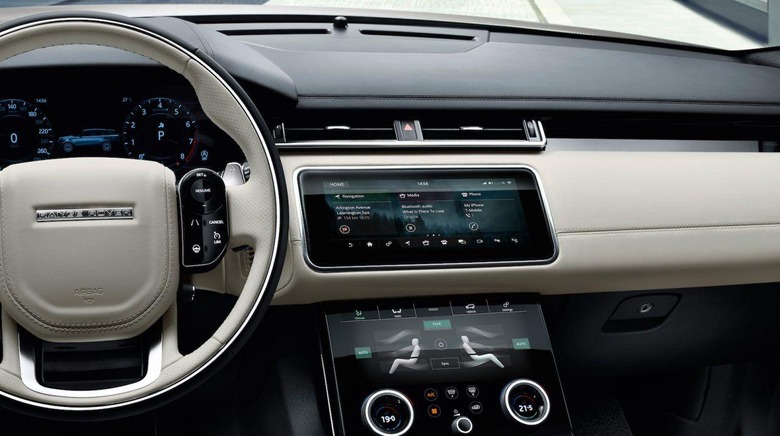
As for the lower touchscreen, that handles climate control and Terrain Response. Unlike the menu-based UI for the upper display, Range Rover opted to use static buttons on the lower screen. Capacitive switches below the rotary controllers handle maximum A/C, window defrost, Dynamic Stability Control, and Hill Descent Control. Optional Meridian audio systems offer 17-speakers or a 23-speaker, 1,600 W system; both get a physical volume knob.
It's all powered by an Intel quad core processor and SSD storage, with a data connection for live information and WiFi hotspot for up to eight devices. Range Rover's system supports real-time traffic and the ability to share your ETA with a contact; there's also the option to have the Velar learn your commute, and then flag up potential delays and alternative routes. From the mobile app it's possible to remotely program the navigation, lock and unlock the SUV, check fuel levels, start the engine or HVAC system, and find out its exact location.
Entry-level cars get a 5-inch TFT between analog dials for the driver, while SE and above trims switch to a fully-digital 12.3-inch display with virtual instrumentation. A full-color head-up display is an option, while the steering wheel has capacitive buttons that can be driver-customized. Customizable LED lighting with a choice of ten hues is another option.
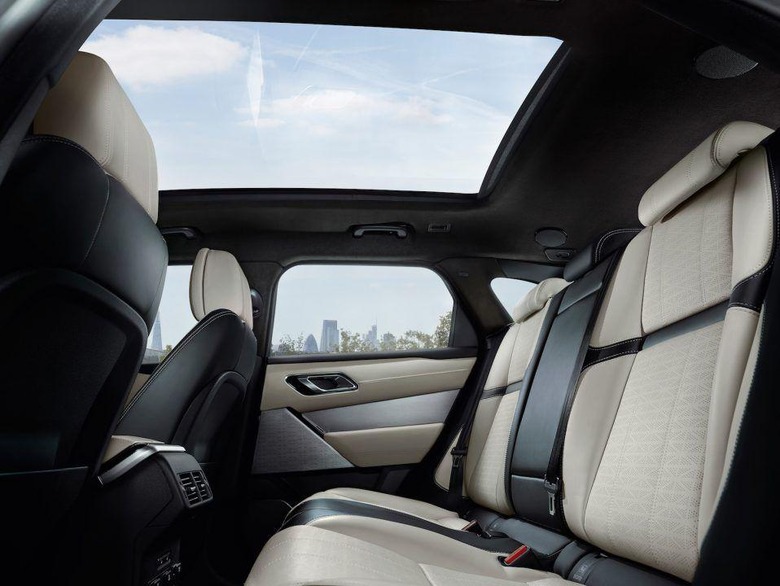
The seats get either woven fabric – made from recycled plastic bottles, in fact – or leather, and there's a choice of pale, open-pore wood or high-gloss wood. Carbon Fiber Copper weave trim, meanwhile, combines real carbon fiber with copper filaments. A split, sliding front center armrest can be adjusted to suit the driver and front passenger independently; underneath there's a cupholder and storage space.
Two USB ports and a 12V power outlet are standard; optionally, those numbers can be doubled. A Rear Seat Entertainment Package adds two 8-inch HD touchscreens, two remotes, two sets of wireless headphones, twin USB 3.0 ports, and HDMI inputs. The door cubbies are designed to hold 24oz bottles, and there's storage space hidden behind the lower touchscreen in the center console. Around the back, a gesture-controlled power tailgate is an option – triggered by kicking a foot under the rear bumper – and Land Rover's NFC Activity Key can be added too.
All in all, it's a lot of technology for what's shaping up to be one of the most important vehicles for Range Rover in recent years. The Velar be priced from $49,900 for the entry-level 2.0-liter gas model, or from $56,200 for the diesel. The Velar S, with the 3.0-liter V6, will start from $64,200, while the fully-loaded Velar First Edition will be $89,300. The Velar will go on sale in the US later in 2017.
European Model Shown
